Yidris, Maelstrom Wielder: Lords of Chaos
- PDH Home Base

- Nov 8, 2017
- 4 min read
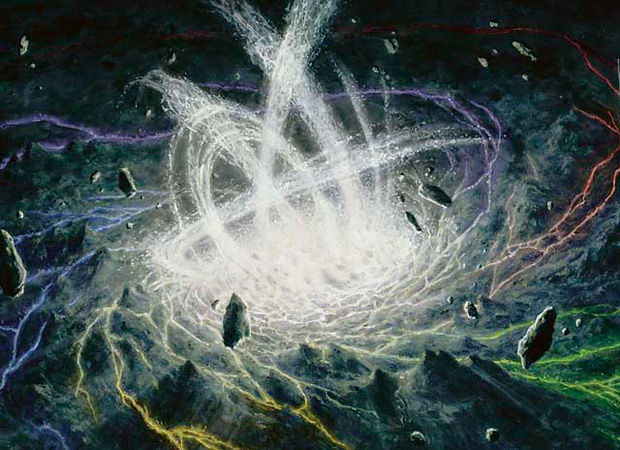
Oh boy, this is going to be a hard one. Yidris, Maelstrom Wielder is a popular commander for spellslinging stormy goodness. However, Pauper does not have a good selection of cascade or storm cards, so this is going to be an adventure. How can we emulate the crazy cascade of spells and abilities with only commons at our disposal? Well, we are going to try our best with our two new commanders of choice: Blizzard Specter, the spooky specter utilizing Shadow and Cipher; and Bloodbraid Elf, the angry elf powering out an impressive Cascade Storm.
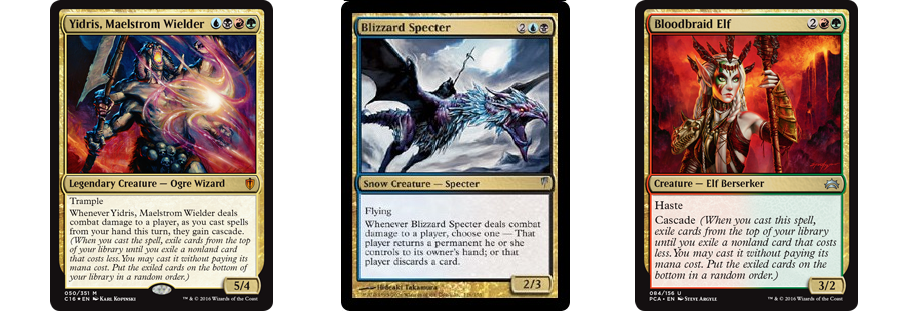
I have a soft spot for seemingly ‘bad’ cards. Sure, there may be better options available, but sometimes flavor and uniqueness just lure me in. Such a card is Blizzard Specter, a four mana, blue-black flier from Cold Snap. This commander wants to be dealing combat damage, in order to control our opponent’s hand and board state. Since we want to be hitting our opponent, we’ll make use of the Dimir mechanic "Cipher". Cipher is an interesting ability, as after we cast the spell, we can attach it to a creature to give it that spell.

The hard part about running Cipher and similar effects, is that we need to actually connect with the opponent. To enable this, we’ll need evasive creatures, and today I’m choosing those with Shadow. Creatures with this ability seem to exist in their own game, as they cannot block or be blocked by creatures without shadow. This nearly makes our own creatures unblockable, meaning they’ll be triggering our Cipher cards all the more often.
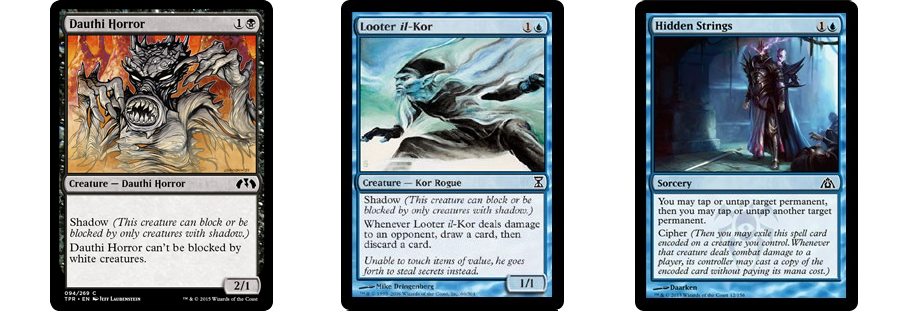
Now that we’re entirely on the offensive, we have no defense. Our shadow creatures can’t block, so our opponents are free to swing everything back at us. To prevent this, we need a few good blockers to make our opponents think twice. Specifically for this deck, I’m looking at defenders with abilities that prevent our opponents from playing spells.
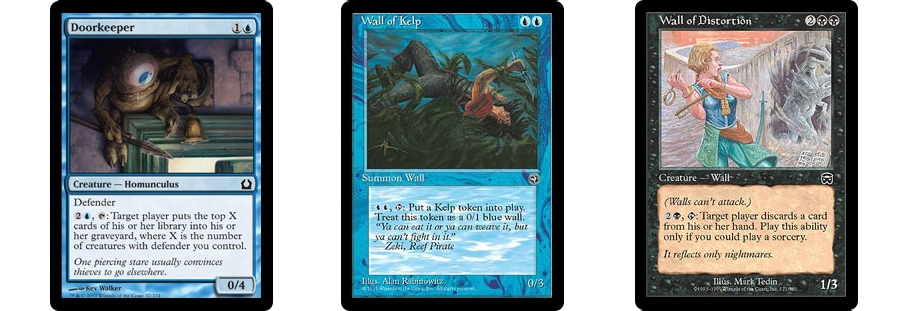
Doorkeeper and Wall of Distortion are two in particular that I’ll focus on. Doorkeeper enables a strategy beloved by many players called ‘milling.’ By milling our foes, we dump their cards straight into the graveyard, no counters or removal necessary. Mill here can be especially potent when we combine it with bounce spells that put cards back on top of a library.
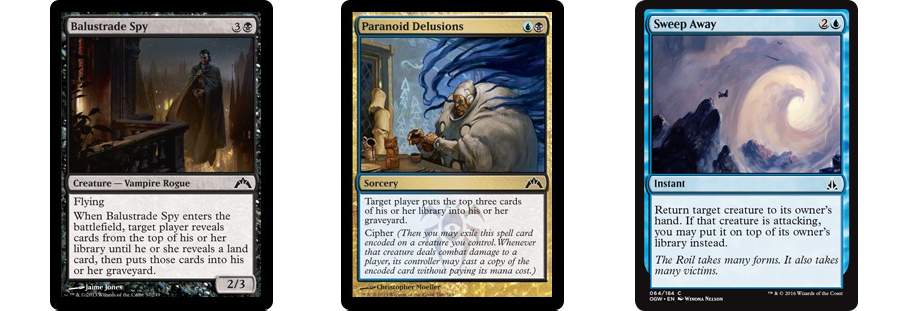
Wall of Distortion grants us access to not only controlling what our opponents do, but what they have the choice to do. Having choices in magic is extremely powerful, and if we control their choices, we control their power. Discard effects can utterly decimate an opponent’s plans, giving you time to establish a winning board state. The best discard spells let you look at and choose what they discard, but when they only have one card in hand, that seldom matters.
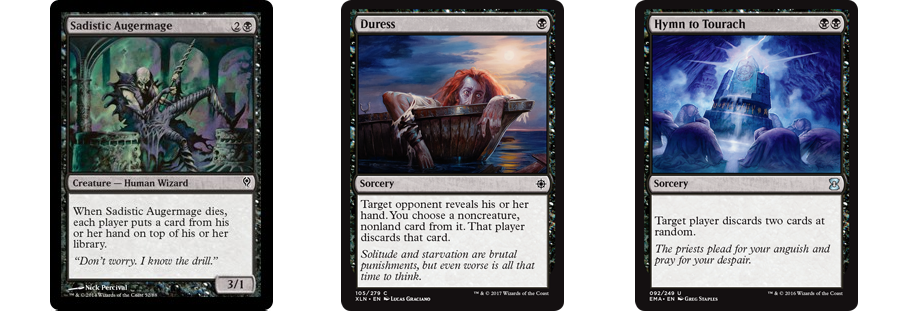
Now that our opponent has their hand and half their library in the graveyard, what’s the final plan to win? Thanks to Iconic Masters, we now have access to two cards previously never seen in common. The Phantasm and Wight both grow larger as more cards are put into the graveyards, making them sizeable threats. Crypt Incursion is a great card for us for two reasons: it lets us shut out reanimator strategies, and can stabilize us against aggressive decks.
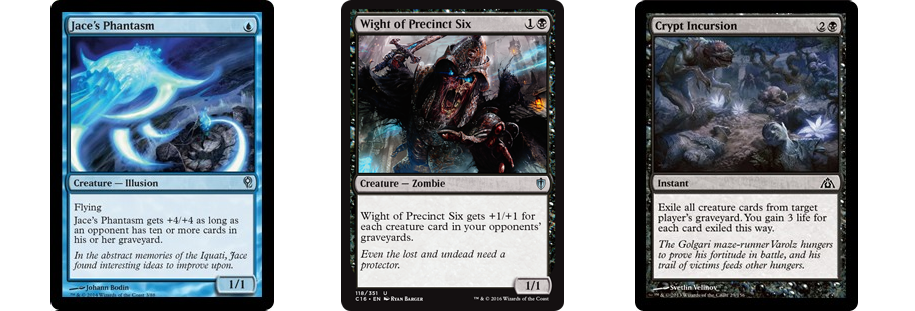
The last few cards I think we can use to round this deck out are some enchantments that give us more effects on combat damage. Since we’re already playing a sizeable amount of unblockable creatures, these are just more effects that will be triggering often.

So, Yidris gains effects by dealing combat damage, which we have covered pretty well at this point. But how about the cascade he grants after doing so? Bloodbraid Elf happily steps in to fill the cascade role. We’ll start by discussing the wincons of the deck.
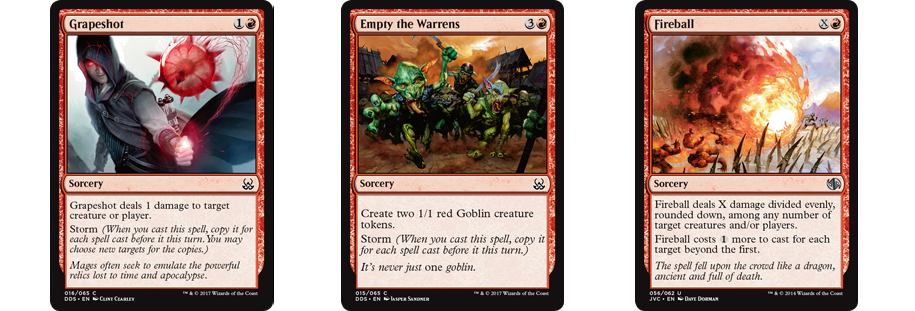
The first two cards have the amazingly powerful keyword Storm. These spells get copied for each other spell cast before them that turn. So if we happen to cascade into them, sadly, they get copied once. Fireball or Rolling Thunder just provide a way for us to spend the absurd amounts of mana we’ll be making to one-shot our desired target. So, for either strategy, we need mana, as much as possible.
There are two categories of mana production this deck will focus on, spell mana, and permanent mana. Spell mana obviously comes from certain spells that generate mana when we cast them. This not only increases our storm count, but also gives us the mana to chain into more spells.
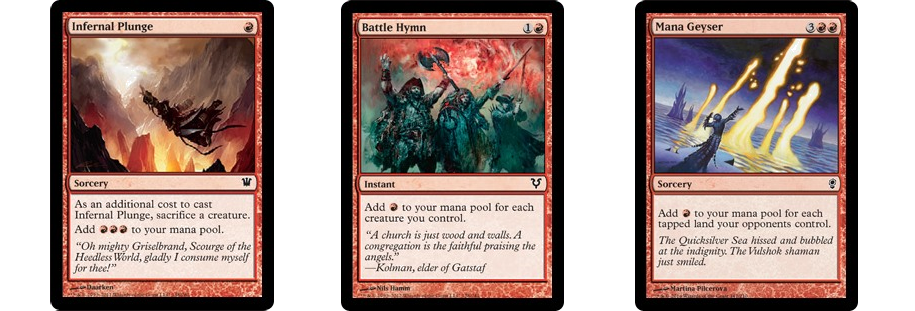
Our second mana sources will come from permanents, either lands or creatures. Like previously discussed with Tattermunge Witch, we get more land with ramp spells. Which can also increase storm count, in a pinch. Creature mana also has a few flavors, from creatures that sacrifice themselves, or creatures that tap to produce mana.
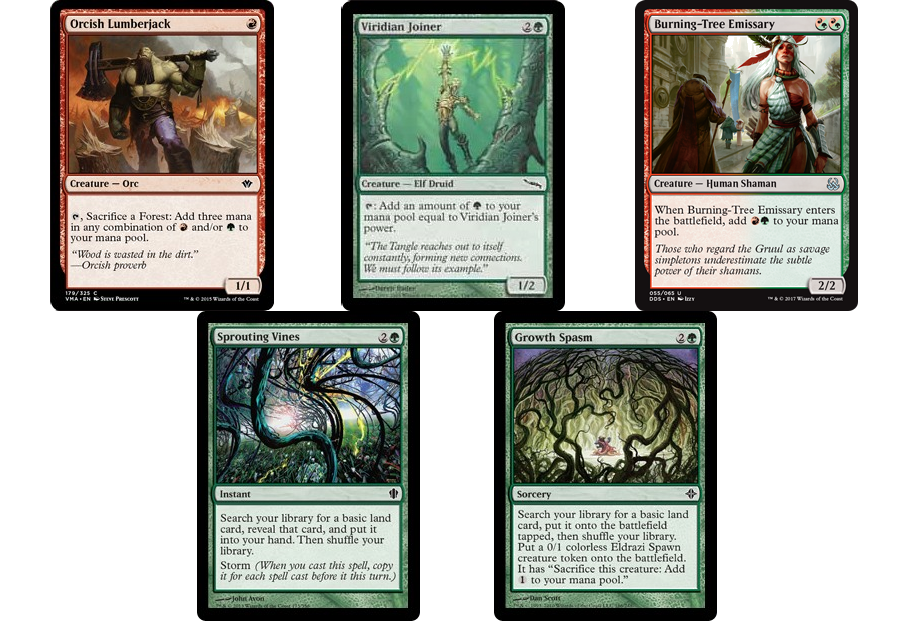
Looking at Growth Spasm and Battle Hymn, I see a fun synergy between the two. By having plenty of Eldrazi Scions or Spawn out, then casting the Battle Hymn, we can double up the mana. With ten spawn, we can produce twenty mana to Fireball someone. Thanks to the recent Battle for Zendikar sets, we have a few more sources of the spawn to utilize.
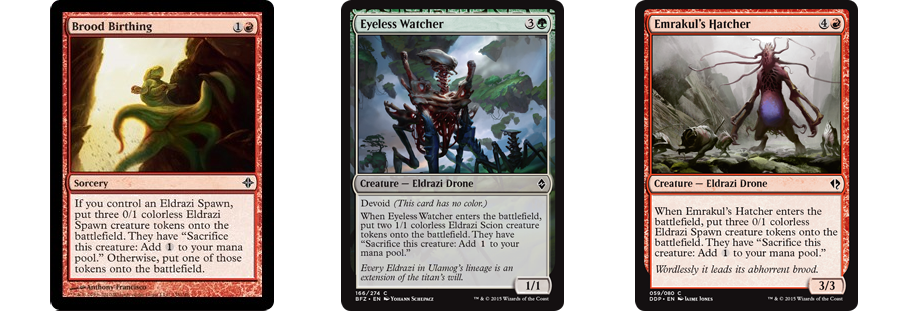
The last effect I would look for when building this deck is some recursion and protection for our wincons, in case they either get countered or accidentally cascaded. These cards may not be needed in order to win, but they make our chances of winning go up a fair amount.
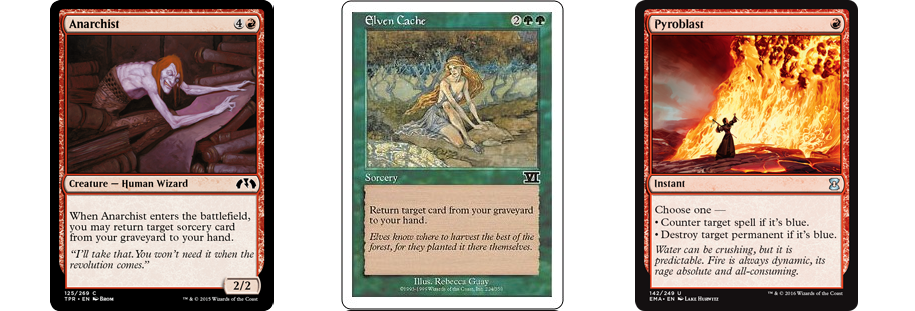
Well, I think that covers our two choices here fairly well. If you enjoy playing Yidris, I hope these two decks have shown you how to wield the maelstrom in PDH. Both commanders can fuel explosive turns that rapidly shift the game to your favor. I’ll be back next time with the last installment in the Commander 2016 breakdown series with Atraxa, Praetor’s Voice, and her two followers, Corpsejack Menace and Juniper Order Ranger. See you all then!
-Nate
@PDH_Homebase




Comments